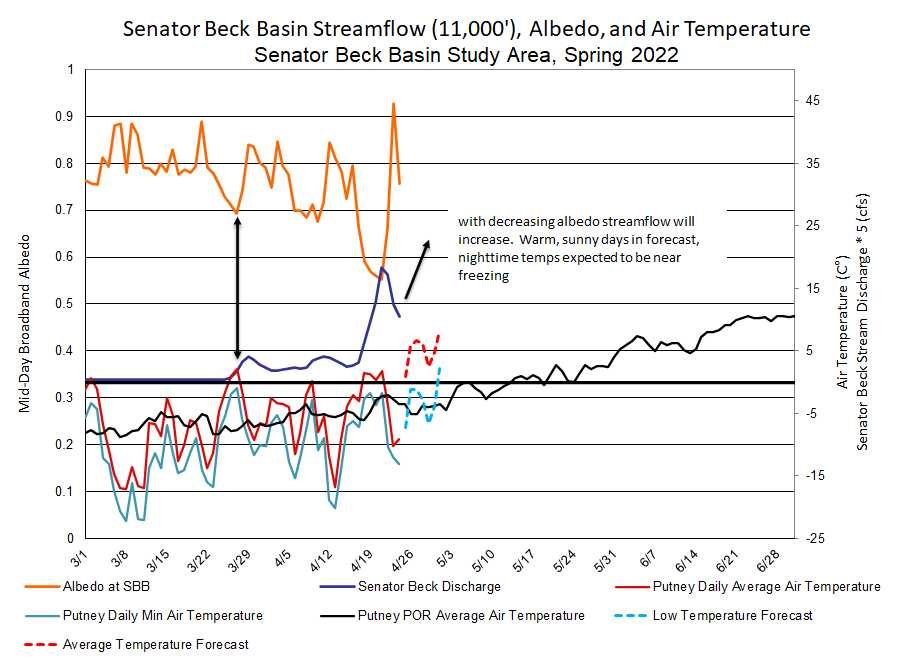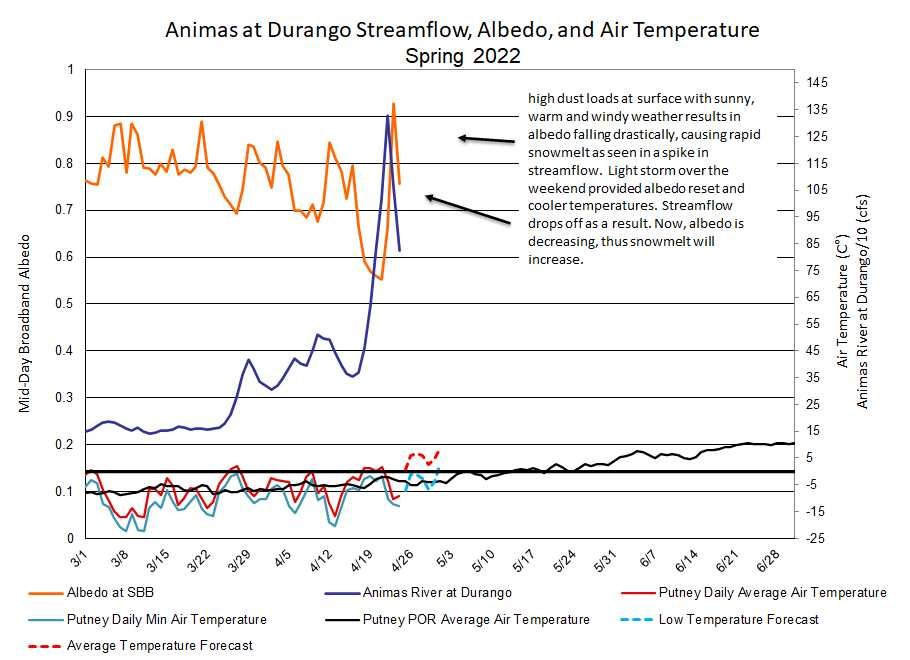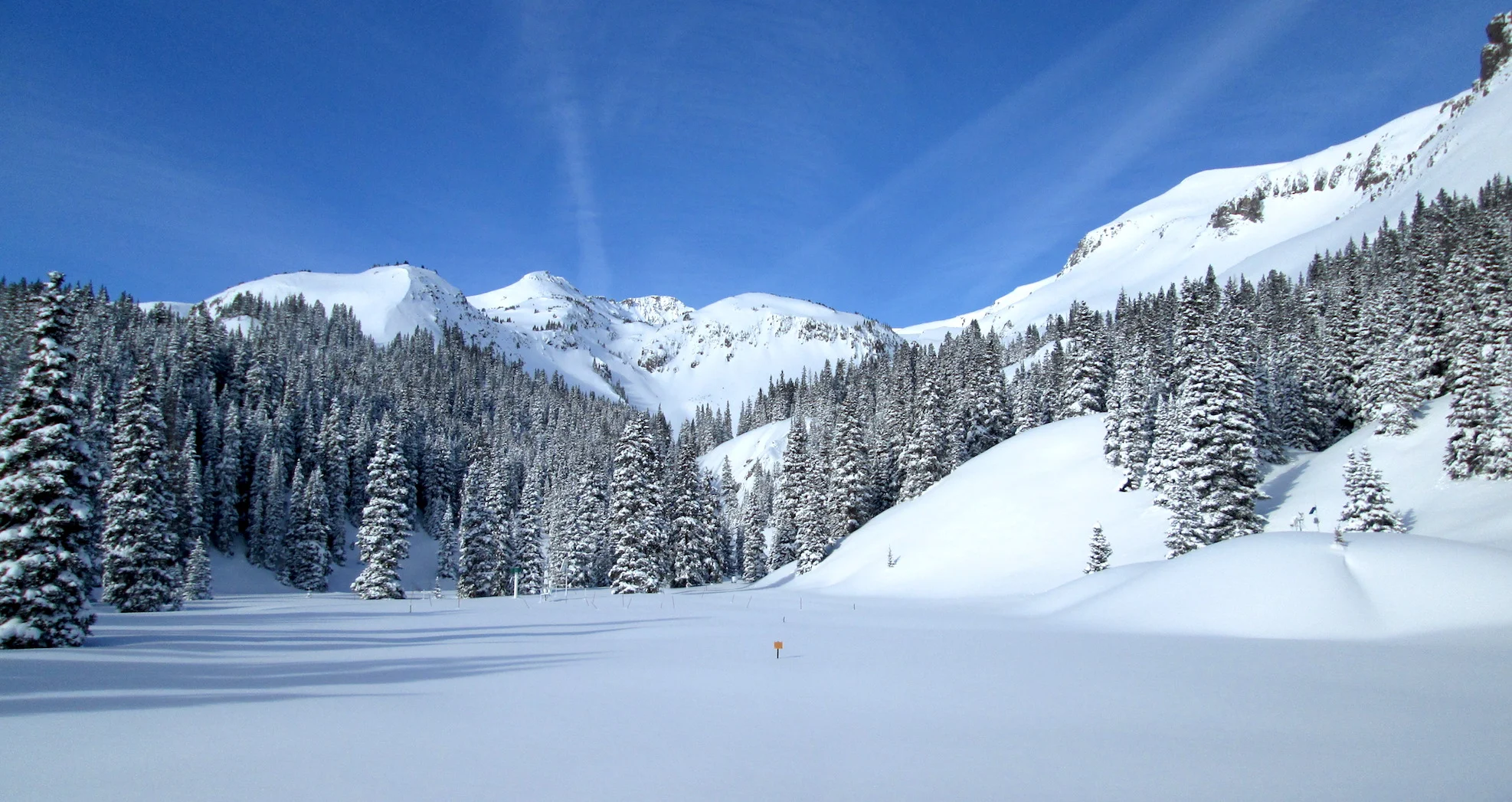CODOS Update April 25, 2022: More Dust (#7) with Precip, Warm up Thru the Week
Greetings from Silverton,
The high winds just don’t let up. Dust was prevalent throughout Colorado and the Southwest states last week and on Friday (April 22) more dust hit the Colorado snowpack (with 100mph winds at Red Mt), falling on existing surface dust before being covered by modest snowfall in the San Juan’s and a bit more towards Central and Northern Colorado. This marks dust event #7 in our record keeping. There are now at least three combined dust layers re-emerging in Southern Colorado and elsewhere depending on snowfall amounts over the weekend. In one day measured albedo from radiation sensors at Swamp Angel dropped from 93% to 76%. The result will be streamflow on the rebound. Given the weather forecast and heavy dust at/near surface we are looking at early full snow ablation again this year. Once plants and soils are exposed, the warm/dry/windy conditions will rob water and dry out the landscape, see NIDIS image and link below).
Take Care,
Jeff Derry
Below: Plots of albedo, streamflow, temperature, and forecasted temperature. The weekend precip provided a temporary clean surface and cooler temps to reduce snowmelt rates. The forecast is for sunny/warm conditions to return. Nighttime temps are expected to dip below freezing for the next few days, maybe that will keep snowmelt rates in check to some degree?




Below: Photo taken of San Juan Mts showing dust on snow conditions. Photo taken by Adam Pate on April 18. For reference, Big Meadows and Metroz Lake are circled.
Below: Snowfall amounts over the weekend. The wet spring storm is consolidating fast, in the San Juan’s dust is reemerging to surface as seen in the albedo data and observations. Expect streamflows to respond to decreasing albedo in 1-2 days.
Below: You may have heard myself or others talk about the thirstier atmosphere that has become the norm. Below is an image from the National Integrated Drought Information System showing the changes compared to 1980-2020. The biggest changes are in the Rio Grande. Southern Colorado also shows a large increase.






